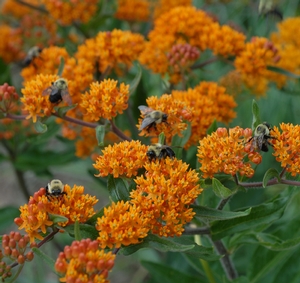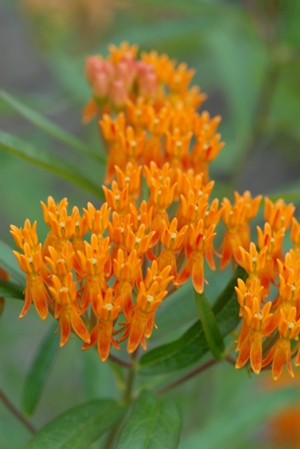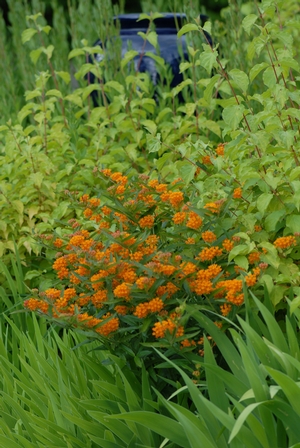





Plant Calculator
Enter the approximate length and width of the area you will be planting and click 'Calculate' to determine how many Asclepias tuberosa you will need.
Correct and successful spacing is complex and depends on project conditions. We encourage you to call us at 877-ECO-PLUG for project specific recommendations and further assistance.
Asclepias tuberosa
butterfly milkweed (butterfly weed)
- Category: Perennial, Native
- Hardiness Zone: 3-9
- Height: 18-24 Inches
- Spread: 24 Inches
- Spacing: 12-18 Inches
- Bloom Color: Orange
A tough, drought-tolerant native with intense orange flowers in mid to late summer. Attracts many varieties of butterflies and is especially attractive to Monarchs. A beautiful solution for a dry sunny slope! Occurs in dry fields and roadsides in most of the US.
Click here to download technical information for growers:
Additional Information about Asclepias tuberosa
Asclepias tuberosa is a showy and tough milkweed with intense orange flowers that bloom in mid to late summer. Unlike other milkweeds it does not exude a milky sap when its stem is broken. It is native to various types of prairie habitats across the Midwest and eastern United States as well as sites with poor, rocky or sandy soils - even roadsides and railroads.
Butterfly milkweed is more compact and generally less agressive than its cousin, Asclepias syriaca. It's also an excellent, long-lived performer in our bioswales (which like many stormwater systems are frequently subjected to both drought and inundation). We also love this as part of the plant palette for xeric meadows and engineered urban stormwater systems. It thrives in full sun and intense heat!
It is one of many Asclepias species, all of which are required food for monarch butterfly larvae. It is also a great nectar plant for other butterflies, insects, and even Ruby-throated Hummingbird.
Growing & Maintenance Tips for Asclepias tuberosa
Given its natural habitat, you can see that it needs no coddling. Best located in a sunny dry spot, but will tolerate average to moist garden soil as well. Does not do well in wet soils and does not compete well with surface rooted trees. However, competes well with grass which makes butterfly weed ideal for meadow gardens. Can be propagated by root cuttings and seed. Plant is taprooted so beware when transplanting.
